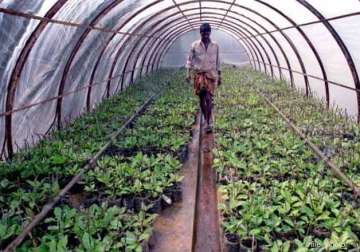What is the future of farming in India?
There has been an evident trend in most of the Indian villages. People are getting educated and leaving villages in search of better work opportunities in cities. So, what is the fate of agriculture in

There has been an evident trend in most of the Indian villages. People are getting educated and leaving villages in search of better work opportunities in cities. So, what is the fate of agriculture in future India ?
The future of farming in India should be fewer, educated farmers running highly efficient farms and producing high value goods.
First, a basic reality. One hectare of a good rice farm produces 2300 kg of rice that fetches about Rs.20/kg for the farmer [$1 = Rs.63]. In other words, a hectare (2.5 acre) produces Rs.46000 worth of food every year. Reduce the expenses for fertilizer, seeds, pump etc that falls to less than Rs. 15000/hectare. We have two farmers sharing that Rs. 15000 per year of production or a monthly earning of Rs. 600/farmer [with which he has to support a family].
Here is a simple exercise for you: if I have to increase the farmer's earnings from Rs. 600/month upwards, what numbers would I have to change (hint: look for the bolded terms)?
Second, there seems to be an unnecessary and illinformed alarm about farmer numbers dropping. Let me paste the graph from the new article in question.
In 1951, India had 98 million people working on farming. In 2014, we have 262 million people working in the farms. That is an *increase* of near 3 times since independence.
We don't produce lands. That means we are adding more people working on the same acre of land. Even with Green revolution our average farm productivity has increased only twice. For instance, we are producing now 3000 kgs of wheat from a hectare of land compared to 1307 before green revolution.
Or in other words, almost every gain in green revolution is lost because India has added 3 times more agricultural labor. The farmer is back to square one - because the increase in productivity is neutralized by the increase in farmers.
In 2014, have nearly 2 farming workers for every hectare of farms. These two combined produce 2200 kg of rice or 3000 kg of wheat. Or 1100 kg of rice per farmer. This is the nearly same level they produced in 1951!
In summary, the Indian farmer is in the same position as they were in 1951, because our growth in farming productivity is neutralized by increase in number of farmers. While every other occupation has experienced an increase in salaries, farmers are in the same position due to this simple fact.
Open your eyes to this fact and no point hitting your head against the wall.
So, then why do I read a lot about farmer suicides in India?
It is a pretty important problem. But, we need to dig more into that data. Researchers looked into the problem of farmer suicides and the conclusion is that farmers are no more likely to commit suicides than housewives, students and other laborers in India. Suicide mortality in India: a nationally representative survey. Suicide in rural India as a whole is high and that is the problem we need to solve. In fact, among the unemployed, the suicide rate is 3x of farmers. One way to reduce suicide epidemic in rural India is to build prosperity and that is the thing we need to focus on.
Farmer suicides in India is also not higher than a few other nations:
French farmers are committing suicide at alarming rates and farming by its nature is a highly stressful profession: Page on oxfordjournals.org - This is one reason why many are moving out of farming, not just in India but across the world - Why Farmers Quit: A County-Level Analysis
Would not a drop in farmers cause a drop in food production?
Not necessarily. Actually, our food production is growing. Let's also look at what happened in the rest of the world. One German farmer produces more food than 20 Indian farmers. Same for almost every developed nation. Thus, the German farmers are richer, healthier and happier than the Indian farmers.
If we want to become as rich as Germany, our farmers individually would have to produce more. We are slowly getting there. This productivity growth is already happening and will continue to happen faster than the rate at which the farmers are quitting. See how farming is changing in India.
How do we build prosperity for the farmers
Average farmers salary = total food production / total labor
By basic math, we have to both increase production and decrease in farming labor for our farmers to have an increase in earnings. That is how we can become developed. If you cannot change both factors change one of the them drastically. It is basic math guys and not rocket science.
For production to increase, India needs:
Well educated farmers who can use best of modern tech.
To clear the anti-science folks blocking GMO crops that promise higher production.
Better investment from both domestic and foreign companies.
In the meanwhile, we need to drastically reduce the total labor involved in farming. The decrease that is happening in the past couple of years is mild. We need to plan for flood of them exiting farming and focus on improving their skills to prepare them for factory and services. This is a natural progression in economics that every developed nation went through. That would also require us to rapidly increase the number of factories and service businesses.
Instead of worrying about the reducing number of farmers, realize that this reduction is essential for increasing farmer earnings & reducing poverty. If anyone says otherwise, push them to do the basic numbers.
(The article was first published on quora).